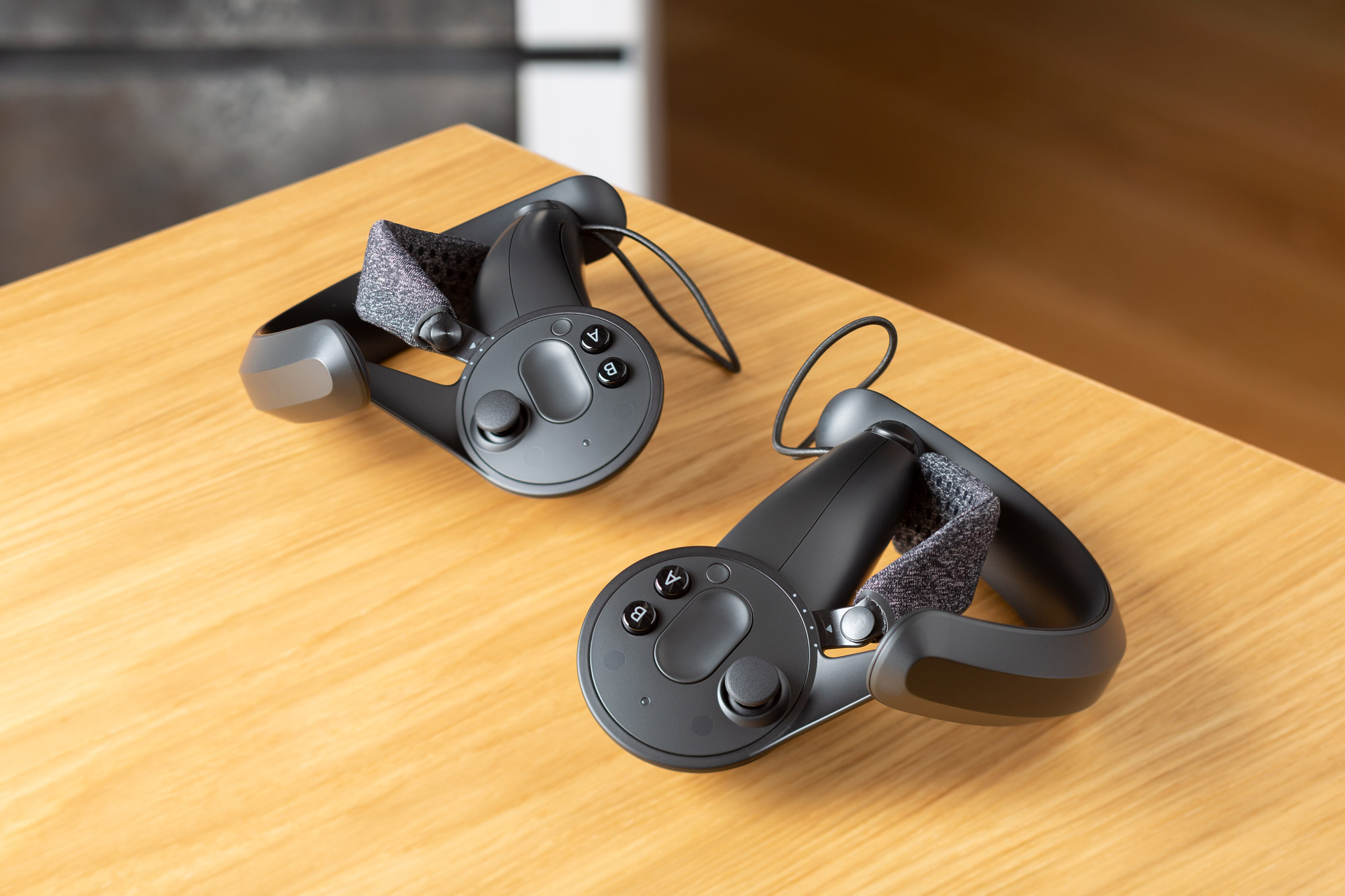[This article was originally published on 4/9/19.] Thanks to some slip-ups, we already know a little more about Valve Index than we should. We know, for example, that it’s shipping in June with pre-orders going live in May. We also know there are integrated headphones, DisplayPort 1.2 and USB 3.0 connections, and that it ships with the Valve Index controllers.
But there’s still a heck of a lot more to learn about the Index. With so much in the shadows, we’ve come up with a wishlist for the kit.
Upgraded Specifications
Any new VR headset on the market is always going to be poured over specs-wise. But Index’s mysterious spec sheet is of particular interest. It will signal whether this is the next big leap for VR headsets or if it’s perhaps more of an incremental update like the new Oculus Rift S. With that headset potentially expanding the market, we’re hoping Valve is instead prepping to push the boundaries of high-end VR.
We’ve heard from sources that Index has an upgraded field of view and a resolution similar to that of the HTC Vive Pro. We’ll be eager to see the final stats set in stone, though. Only then will we know what the next few years of PC VR looks like.
Better VR Controls
One of the decidedly less mysterious aspects of Index is its controllers. They were popping up online long before we got word of Index itself under the Knuckles codename. They feature new finger-tracking sensors that may bring your hands into VR with a greater degree of accuracy. They also use a strap fastened around your hand that allows you to let go of the controllers when you’re not holding anything. These are pretty promising new features.
The question is, do Valve’s long-awaited controllers raise the bar above current VR input devices, and by how much? That’s a question we won’t be able to answer until we’ve finally got our own hands on a pair. Still, we’re hoping for a noticeable step forward, however small. The Index Controllers could be more evolution over revolution, but that would be fine with us.
VR Gaming That Makes A Statement

Yes, yes, we all know what we really want; an HEV suit, a crowbar and an army of headcrabs to whack. But simply sticking the Half-Life name over a VR shooter and throwing it out to the masses isn’t enough.
What we want to see from Valve’s Index games is a fundamental grasp of the language of VR and a clear vision of where it’s going in the future. VR development has come a long way, but it’s still a wild west in desperate need of a development touchstone. Half-Life changed the gaming industry for good. Half-Life VR can’t just retrace its steps; it needs to forge a new path. What that is and what it looks like? I have no idea, but I’m not Valve.
No pressure, then.
A Fair Price
This might be the biggest ask of all, especially if we had our way with the rest of the headset. But, at $799 in 2016, PC VR was destined to years of obscurity. Combined with the price of a powerful PC, it was simply too high a price to allow virtual reality to become mainstream.
I’m in no way expecting Index to match Rift’s $399 price, but there’s a big gap between that and the Vive’s original price point. If Index lands somewhere in the middle (as a full set and not just the headset), I’d be happy. It’s a tall order, but it could be crucial to the role Index plays in the future of VR and, by extension, the future itself.
Easier Set Up And Fewer PC Bugs
Valve’s first generation SteamVR Tracking system was easier for many people to set up than a room-scale Rift. While the Rift requires at least three sensors spread around the room and hooked up over USB back to the PC, Valve’s tracking technology uses positional beacons (aka lighthouses) to identify headset and controller positions. Only two lighthouses are needed for room-scale tracking and, critically for some, they don’t need to be hooked up to a PC to track movement over large rooms.
Oculus Rift S completely changes the setup process compared with the first generation Rift. While the new headset may not track movement with the lights turned off, it is going to be way easier to set up a Guardian system for room-scale movement freedom. That’s because the system doesn’t need those external USB sensors anymore and you can mark the boundaries of the space while wearing the headset.
We hope there are similar improvements to the Valve Index setup process. In addition to hardware setup, though, any PC VR user knows the frustrations involved with updates and software bugs related to Windows or SteamVR. We hope the new system from Valve produces fewer of those problems.






























